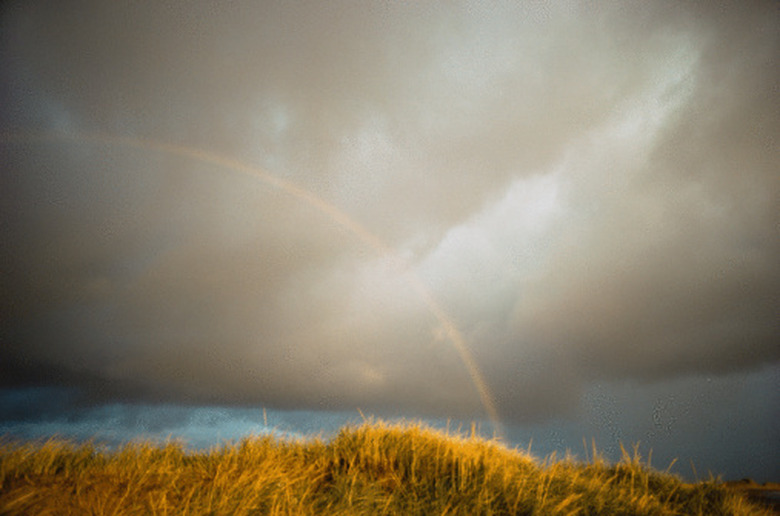Light Wave Experiments
Light waves, which have been found to exhibit characteristics of particles, behave in certain ways that we can observe by experimentation. Light waves diffract in the same manner that waves diffract when they collide with an object. They also undergo interference when passing through or reflecting against objects of different mediums.
Bending Light
Bending Light
Remove the sharp end of a blue tack and glue the top to a penny. Place a solid-colored ceramic bowl on a tabletop, and then place the penny in the bowl, with the tack side facing up. Back away from the bowl until you cannot see the penny. Fill a large glass with water and pour it slowly into the ceramic bowl. From a distance, watch the penny begin to appear as you fill the bowl with water. This demonstrates the ability to bend light over a top or corner, where an object was not visible before.
Sunlight Waves and Particles
Sunlight Waves and Particles
Fill one clear plastic cup with tonic water and another clear plastic cup with tap water. Use a felt pen to mark the tonic cup with a "T." Set the cups outside in the sunlight when the sun is at its highest (i.e., noon). Hold a large piece of black paper behind both cups. Examine the color of the water through the sides of the plastic cups. Notice the blue coloration near the top of the tonic cup. The quinine in the tonic absorbs ultraviolet light and emits it as visible light.
Reflecting Light Waves
Reflecting Light Waves
Obtain a very shiny spoon, preferably a highly polished silver spoon. Notice the reflection of your face on the inside of the spoon. Turn the spoon over and look at your reflection on the outer side of the spoon. The inside of the spoon, i.e., the convex side, makes your face appear larger, while the convex side makes your face appear smaller. This experiment shows how light waves reflect differently from curved surfaces by dispersing in different directions.
Spectrum Rainbow
Spectrum Rainbow
Stand in your front yard on a warm day, an hour or two before or after noon. Turn your back to the sun. Hold a water hose and adjust the pressure nozzle for a fine mist spray. Spray a large mist against a dark background, like a hedge or tree trunk. You will see all the colors of the spectrum through the mist, beginning with red and ending with indigo and violet. This experiment demonstrates how light waves bend and slow down as they travel through water. Each color bends at its own angle, allowing you see each color individually.
Cite This Article
MLA
Stevenson, Chris. "Light Wave Experiments" sciencing.com, https://www.sciencing.com/light-wave-experiments-8347626/. 24 April 2017.
APA
Stevenson, Chris. (2017, April 24). Light Wave Experiments. sciencing.com. Retrieved from https://www.sciencing.com/light-wave-experiments-8347626/
Chicago
Stevenson, Chris. Light Wave Experiments last modified March 24, 2022. https://www.sciencing.com/light-wave-experiments-8347626/
